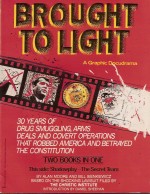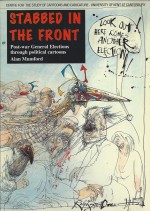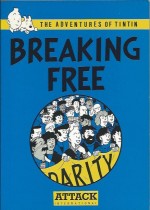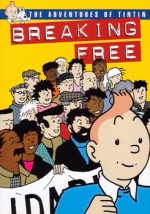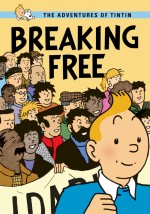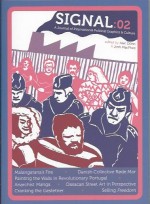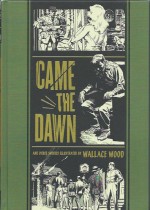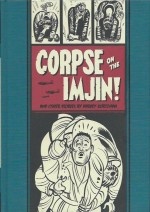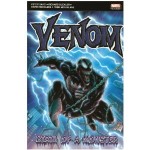

By Mac – Stan McMurtry (Sphere)
ISBN: 978-0-7221-5798-5
“Democracy must be something more than two wolves and a sheep voting on what to have for dinner†– James Bovard
If you live long enough you’ll experience the pop culture keystones of every definitive era of your life at least twice more. The base, tasteless and utterly superficial aspects of the 1980s are currently doing the rounds again as the current generation – which was too young to remember them – get all nostalgic for the good bits and blithely ignore all the bad stuff: same as it ever was…
For us Brits it was Union-Bashing, Loads-a-Money, Yobs and Yuppies, poverty, excess, Royal Weddings, daft hair and Thatcher, whilst America endured trickle-down Reaganomics, insider dealing, illicit warfare and poodle rock – so nobody really got off lightly either side of the Pond – and then all the money ran out…
The truly amazing – and most depressing – realisation is that the issues never go away. The names and faces of the political or industrial scoundrels and mountebanks may change, but the mistakes they make and problems they create just keep going, so it’s always a wearisome, disturbing but oddly topical exercise to examine news cartoons this long after the fact and discover how distressingly familiar the hot topics still are. Same as it ever was…
So here’s another little dip into the vast forgotten annals of cartoon comedy generated by Britain’s greatest natural resource (and still un-privatised so it belongs to us all for the moment) – Clever Folks What Make Us Laugh…
Oftentimes our industry is cruel and unjust and frequently prone to guilt by association. This collection of cartoons is by Stan McMurtry – perhaps unfairly attributed a cartoon champion of the Populist Right – who, as “Macâ€, has worked for nearly 40 years as social and political cartoonist for The Daily Mail.
Cartooning is a hard, demanding, mercurial job and a regular gig is every brush-monkey’s dream. Although it’s fair to say that most artists who settle in one place have an affinity for a periodical’s positions, stance and core politics, there will always be friction between creative expression and the Editor’s own inclinations and prudence…
The precociously artistic Mac was born inEdinburghin 1936 but raised inBirminghamfrom 1944. His father, a travelling salesman, never supported his son’s dreams of a career in art, but Stan persevered, attending Birmingham College of Art from 1950-1953, after which his 2-year National Service saw him serve in the Royal Army Ordnance Corps until 1956.
On demobilisation he entered the animation industry (at Henley-On-Thames), producing short films for the newly-launched commercial broadcast company ITV. Two of his efforts were prize winners at Cannes. Like so many other artists he also began contributing to the huge and broad cartoon market, selling his first job to Today in 1961. He became a full-time freelancer in 1965, drawing comics strips for a number of Odhams/IPC kids’ periodicals such as Wham! and Buster whilst selling gag panels to Punch, The London Evening News and others.
When Norman Mansbridge retired in 1968, Mac was offered his spot as topical cartoonist on the Daily Sketch, a centrist paper whose politics the artist generally agreed with.
In 1971 the paper was absorbed by the Daily Mail, a broadsheet which was repositioning itself as a tabloid. The once-posh paper had for years favoured the use of two staff cartoonists but was letting the revered Wally “Trog†Fawkes go (to The Observer). Offered the vacant chair, Mac alternated with the venerable John Musgrave-Wood – who signed his beautiful but so savage visual blasts against the Left “Emmwood†– until the senior partner retired in 1976.
From then, although other cartoonists appeared, the paper was Mac’s playground. Despite Editor David English constantly urging McMurtry to be “more politically mindedâ€, Mac felt happiest employing sarcasm and gentle mockery, regarding his job as making “the dreary news-copy of the daily paper brighter by putting in a laughâ€.
Mac has always been adamant that he was more a social than political animal. Even whilst spending decades turning last night’s newsflash into this morning’s mirth, McMurtry has always pursued other lucrative creative pursuits: working in advertising, straight illustration and greetings card design. In 1977 he wrote and drew children’s book The Bungee Venture and negotiated it into a Hanna-Barbera animated feature. With writing partner Bernard Cookson he also wrote TV scripts for comedians Tommy Cooper and Dave Allen. He was awarded an MBE in 2003 and remains at large and comically active to this day…
Artists like Mac who were commenting on contemporary events are poorly served by posterity. This particular volume (re-presenting a selection of single panel-gags from August 9th 1983 to June 8th of the politically and culturally front-loaded year 1984), like all of these books, was packaged and released for that year’s Christmas market, with the topics still fresh in people’s minds.
Decades later the drawing is still superb and, despite perhaps the wry minutiae escaping a few, the trenchant wit, dry jabs and outraged passion which informed these visual ripostes are still powerfully effective. And obviously human nature never changes and there’s nothing new under the sun…
Many of the blasts in this book deal unkindly – but rather hilariously, I’m forced to admit – with the fallout from the Greenham Common protest (and I’m speaking as someone who lost his then-girlfriend to that clarion call to arms, and marvels that today’s Occupy movement is so marvellously Co-Ed), underage sex and contraception, industrial turmoil and business closures, Health scandals and the NHS under attack whilst the Police themselves were increasingly Under The Cosh: same as it ever was…
There’re also episodes of Royal embarrassment and unwise escapades caught on film, doping and gender testing at major sporting events, the outrages of racist football thugs and players, vacillating doctors’ advice on booze and smokes, turmoil as opposition leaders were judged inadequate and heartfelt tributes to entertainment giants who had passed away…
Then as now, the overwhelming rain and horrendous climate often seized our attention, as did Irish Republican killers, the threat of Iran, illegal American wars, Arab Oil, celebrity love cheats, Airline blues, tacky TV Magicians, Judges with no grasp of modern life, holiday horrors, Parliamentary scandals (sex and money) and mouthy maverick cricketers causing trouble, all while the battle for equal pay for women was raging…
We kept annoying the French, there were Olympic surprises, welcome pops at privileged Toffs and posh-boys, wry Anniversary celebrations of WWII, the Scots were revolting, we all thought the Chancellor was inept or crooked, there were Papal gaffes and the Press was obsessed with Princesses…
My absolute favourite gag is a panel from February 23rd 1984 in which an ambitious couple behind a tree aim a little tot at the pram carrying the baby William Windsor and urged her to ‘Think of your career, kid – just saunter up to the Prince William and say “Hello gorgeous’â€â€¦
Thankfully some progress has occurred. Less perennial topics included pops at the PM’s idiot children (give it time), the prejudices shown to returned and wounded servicemen, body-issues and diet Nazis, arrogant and paranoid Yankee Presidents, insane African dictators, out of control school kids and… Hey, wait a minute…
Despite being often and usually unfairly targeted by factions of the Left and Right – and even accused of racism on one occasion – Mac is one of most celebrated and lauded cartoonists in British history: his energy, creativity, perspicacity and grasp of the public mood generating thousands of unforgettable gags and acres of brilliant cartoons.
His comical commentaries, produced on a punishing daily deadline, were appreciated if not feared by Peers and plebs alike and were all created with a degree of craft and diligence second to none. Even now, decades later, they are still shining examples of wit and talent… and still bitingly funny too.
It’s a terrible shame that the vast body of graphic excellence which topical cartoonists produce has such a tenuous shelf-life. Perhaps some forward-looking educational institution with a mind to beefing up the modern history or social studies curricula might like to step in and take charge of the tragically untapped and superbly polished catalogue of all our yesterdays.
Clearly they’re all short of a bob or two these days and I’m pretty sure these cartoon gems could find a willing market eager to invest in a few good laughs, or even market them as social history books that students might actually enjoy absorbing. Same as it never was…
© 1984 Stan McMurtry. All rights reserved.


